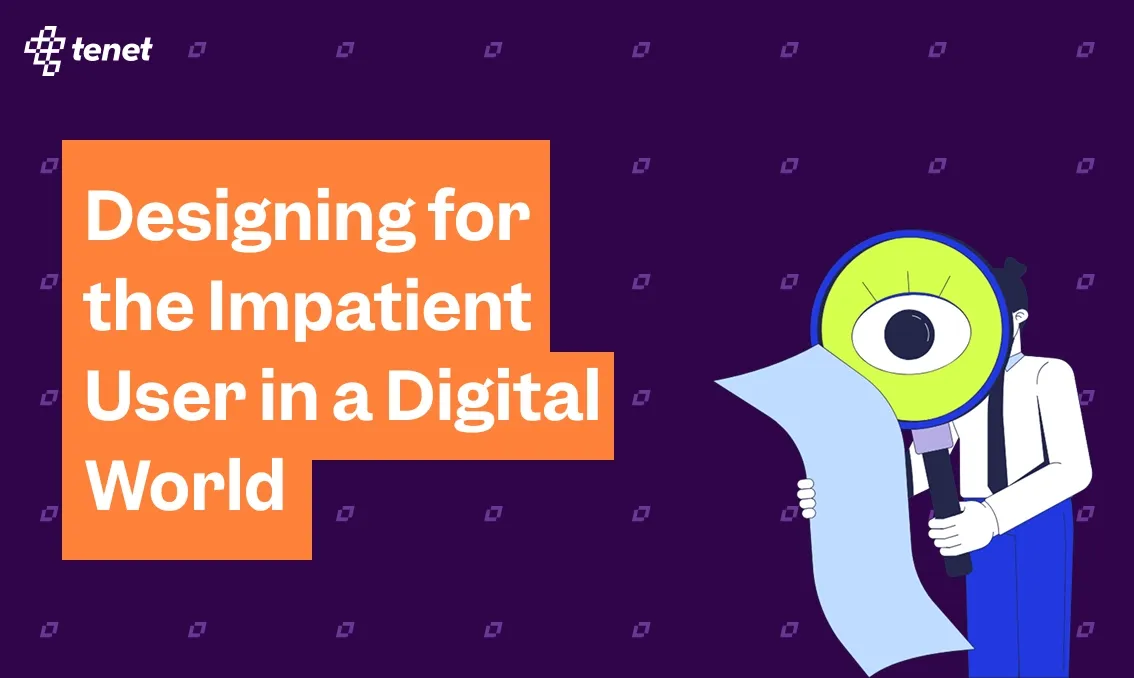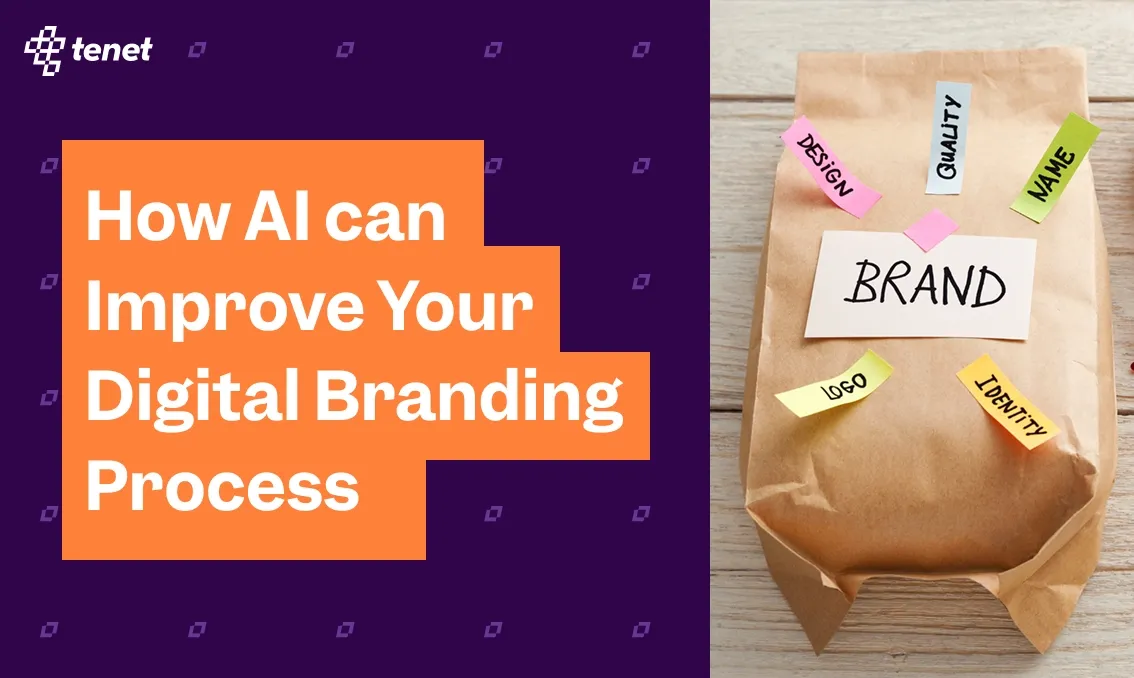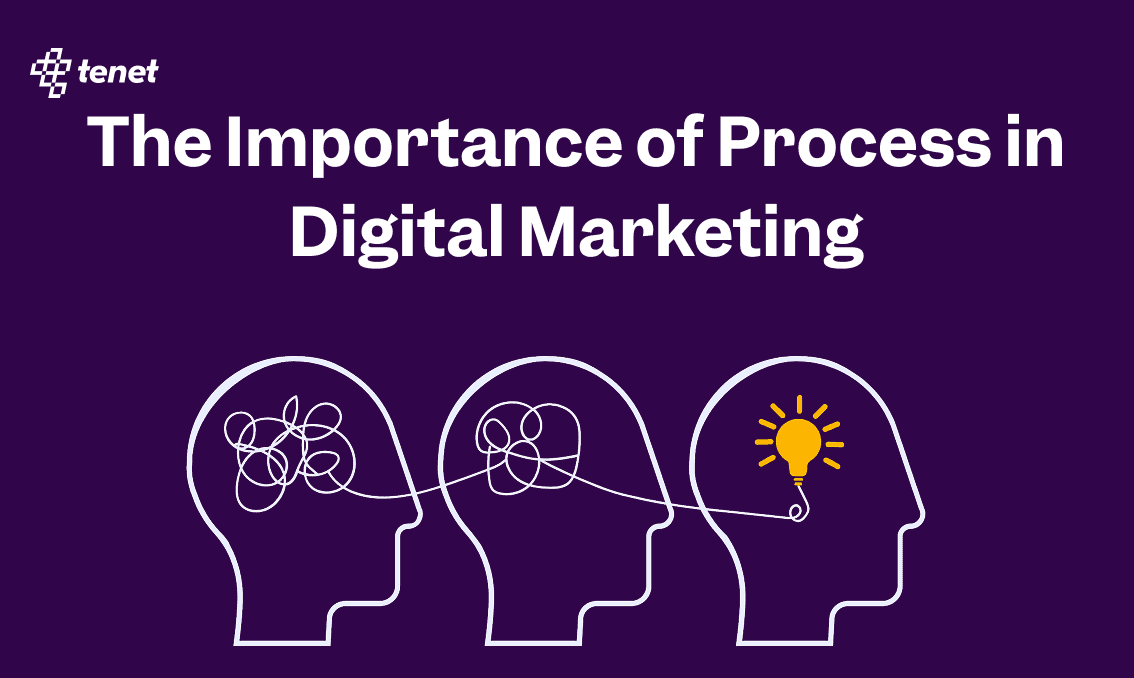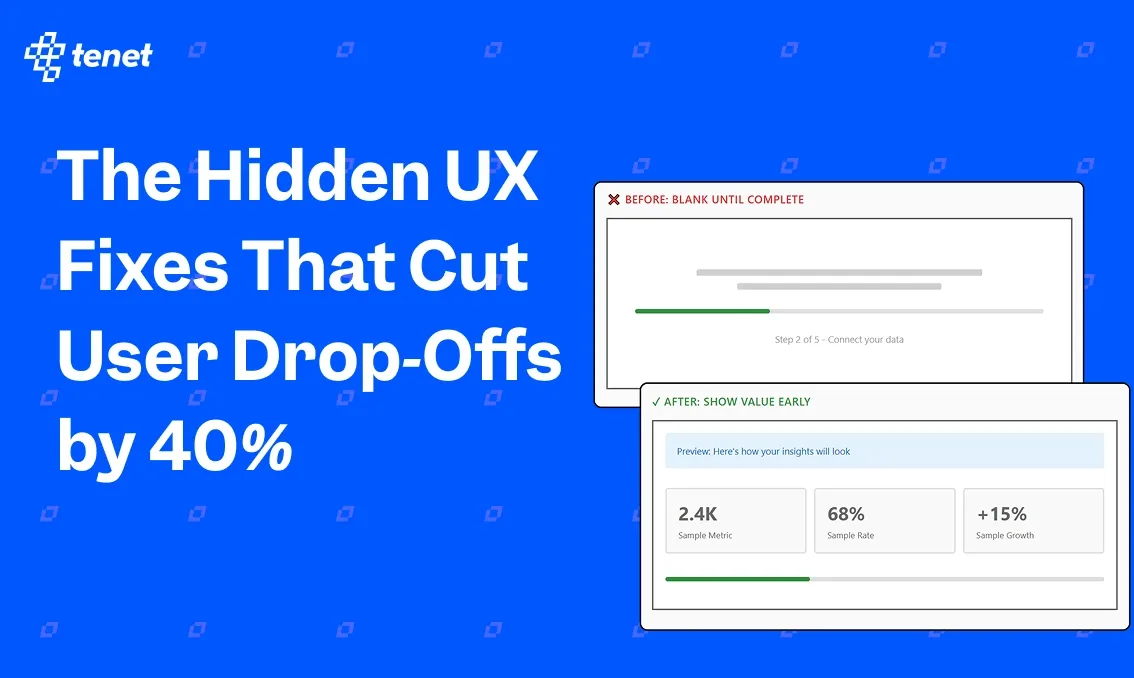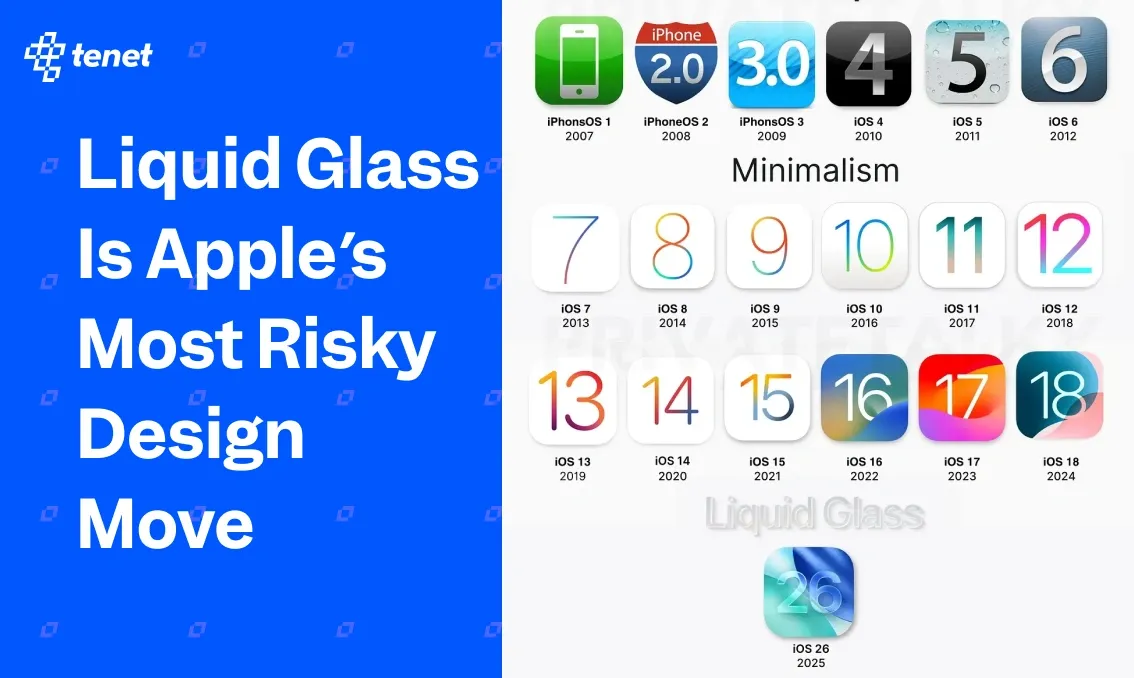What Happens When Marketing Scales Faster Than Tech
Share
Share

Get a quick blog summary with
A company is built over years of product work, engineering effort, and customer learning. But when leaders look for quick scale, the first thing they decide is often to increase marketing spend and push for faster growth.
The reality is that a marketing team can scale attention faster than the technology and product systems can support. And when the product or backend is not ready for that demand, things break. Performance drops, conversions fall, and users leave with a poor experience, even though the marketing did its job.
At our agency, we work with startups, SMBs, and enterprise clients across different industries and have seen this happen countless times. A brand pushes the growth button before its systems are ready, and the results are not what they expect.
So how do we deal with it?
We will share our process and playbook in this guide, but before that, let us first understand what really happens inside a company when marketing scales faster than tech and why this is a common but avoidable growth trap.
Real-World Example #1: Traffic Increased, Conversions Dropped
We worked with an ecommerce brand in the UK. While they were a well-known business with over a decade in the market, their technology stack had not been upgraded in years.
The platform was slow, had inconsistent scripts, and struggled with basic performance under pressure. It started becoming clear when we first reviewed their system, but they were eager to scale paid marketing as soon as possible. They requested us to begin campaigns while their team will be making the technical fixes alongside.
In the first two months, results looked promising. The initial campaigns brought strong traffic, good click-through rates, and a healthy number of add-to-cart events. But once we pushed budgets higher and scaled their winning audiences, everything changed. The website could not handle the spike.
Pages froze, product pages took too long to load, UI failed for a lot of visitors, and checkout broke randomly. Their internal tech team tried patching individual issues, but without addressing the core architecture, the problems kept repeating.
Some major issues we faced included:
- Slow loading website under increased traffic
- Product pages breaking at peak business hours
- 500 and 503 server errors
- Cart drop due to code issues
- Tracking inconsistencies affecting data and reporting
- High checkout abandonment due to lag and payment failures
The lesson here was simple. When marketing scales faster than tech, performance becomes unpredictable and expensive. Before you increase the spend on your campaigns, make sure the platform is optimized, stable, and ready to support growth. Strong marketing cannot fix weak infrastructure. It only exposes it faster. And there are only a few things as bad as seeing the potential revenue that could’ve been made at month end vs what was left on the table because of site failure issues.
Real-World Example #2: Funnel Bottleneck For A SaaS Client
One of our clients in the SaaS space operates in the employee engagement niche and serves a global audience. We had an initial discovery phase with them and created a plan focused on omnichannel growth, with major focus on SEO and PPC campaigns.
The campaigns started strong and early signals were also very positive. Leads and signups were coming in, search visibility improved, and paid channels showed healthy cost per acquisition. But after the initial traction phase, things began to break on the product and support side.
Users started facing issues inside the platform, onboarding delays increased, and gaps in internal workflows surfaced. Soon, complaints started coming in followed by negative reviews. This triggered a chain reaction across channels including negative comments on Facebook ads and user threads on Reddit. Growth stalled not because marketing was weak, but because the delivery system could not keep up with the demand.
Key issues that affected the campaign included:
- Slow onboarding and manual setup delays
- Support tickets piling up due to limited support bandwidth
- Product bugs affecting new users more than existing ones
- CRM and lead response delays causing drop-offs
- Negative user comments hurting ad performance and brand trust
What’s here to learn?
In SaaS, demand can spike faster than delivery capability. If onboarding, product stability, and support cannot match acquisition velocity, growth turns into churn and public backlash.
The good thing was that the client recognized the issue, paused scaling, strengthened internal systems, improved onboarding flows, upgraded infrastructure, and expanded support. Today, they are scaling smoothly and are confidently competing in the SaaS market because their product and operations are now aligned with their marketing engine.
How We At Tenet Ensure a Product Is Ready Before We Scale It
Based on a few such instances across e-commerce and SaaS, we made a few important changes at our end. Even when a client is confident about their product or platform, we do not scale campaigns until we validate system readiness ourselves. Growth should not be a gamble. It should be backed by performance, stability, and capacity to handle demand.
So here is how we ensure every product we work with is ready for scale.
Platform Performance Check
Before scaling any campaigns, we look at how well the platform performs when traffic (and conversion) increases. This includes page load time, server response time, script weight, purchases/signups and how the site behaves under real user conditions.
We run speed tests on core pages like homepage, product pages, and checkout or signup screens. We also simulate high-traffic scenarios if needed. A website or platform that works fine at low traffic often slows down or breaks when the volume rises. We also check mobile load experience since a large share of paid and organic traffic now comes from mobile. If the foundation is not strong, growth only exposes the weak points faster.
We also do user-testing, QA testing, UI testing, stress testing the servers, and for B2B corporate organizations we even do pen testing, if required to ensure scalability and security have no leaks.
We map out all user flows and have our team proceed through them with different edge cases to ensure real challenges are surfaced.
Product Delivery Check
Once a user signs up, buys, or enters your funnel, the real experience begins. We audit onboarding flow, time to value, support availability, and product stability for new users. If users face delays, bugs, or confusion at this stage, scaling only increases negative experiences.
For SaaS, this means reviewing trial flow, first login experience, feature guidance, and response times. For ecommerce, it means checking inventory sync, order processing speed, and delivery communication. A product must be ready to deliver a smooth experience to the traffic you plan to bring. Good marketing brings users in, but a strong product keeps them there.
Tracking + Attribution Check
Accurate data is critical when scaling campaigns. Decisions would only be as efficient as the quality of data captured..
We ensure tracking pixels, analytics events, CRM sync, and attribution models are set up properly. This means validating GA4 events, Meta Pixel and Google Ads tracking, CAPI or server-side tracking, UTM structure, and CRM tagging. If tracking breaks at scale, you lose insights and waste budget. We also test lead quality routing and attribution logic so no opportunity is lost between marketing and sales. A campaign is only as smart as the data guiding it. Without clean tracking, scaling becomes guesswork, and decisions become expensive.
Team + Ops Check
Growth increases demand on people and processes, not just systems. We evaluate internal workflows, support capacity, product fixes turnaround, and AE/SDR turnarounds. If your support queue grows faster than the team can respond, or if product issues take too long to resolve, scaling backfires.
Being a full-service agency allows us to handle every part of this process with clarity and control. We take care of marketing, design, product experience, and tech readiness so growth does not create unexpected problems later.
And if a client needs support on engineering, infrastructure upgrades, or onboarding setup before scaling, we help them prepare that foundation too. Our goal is simple. We make sure your system can support the attention and traffic you are about to generate, so growth becomes stable and repeatable instead of risky and reactive.
Growth Is a Cross-Functional Responsibility
As a leading growth and product partner, it is our responsibility to help brands scale the right way, not the fast way. We have worked with over 300 clients across different markets, including industry leaders like Microsoft, Mercedes-Benz, Coca-Cola, and Pizza Hut. We have seen successful growth journeys up close, and we have also seen brands struggle when only marketing moves forward while tech and product stay still.
Think of it like this: When a campaign performs, it pressure tests the entire system.
Engineering, product, operations, and growth must move together for sustained success.
If you are looking to scale your marketing and product with confidence, we are here to help. Our team ensures your platform, funnels, and delivery systems are ready to handle demand before we scale campaigns. Growth should not break your business. It should strengthen it. Let us help you grow in a way that is scalable, stable, and strategic.
Btw it’s not just me who thinks our team does good work, check out our independently verified client reviews from small $10K projects to enterprise-level $500K projects on Clutch (World’s leading independent B2B research and reviews platform that helps businesses find and choose IT, marketing, and business service providers)
Expertise Delivered Straight to Your Inbox
Expertise Delivered Straight to Your Inbox

Got an idea on your mind?
We’d love to hear about your brand, your visions, current challenges, even if you’re not sure what your next step is.
Let’s talk




